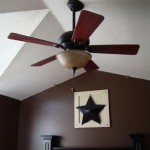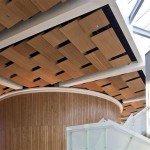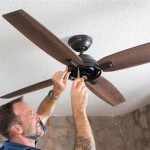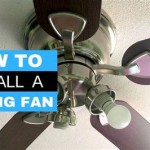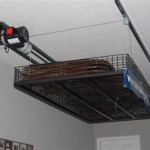Metal Ceiling Ideas For Your Home Renovations
Metal ceilings, once relegated to commercial and industrial spaces, are increasingly finding their way into residential interiors. Their durability, aesthetic versatility, and potential for sound absorption make them a compelling alternative to traditional ceiling materials like drywall or plaster. Utilizing metal ceilings in home renovations offers a blend of modern design, functional benefits, and long-term value.
The application of metal ceilings within a home environment is not without its considerations. Factors such as the architectural style of the house, the desired atmosphere of the room, and the overall budget will influence the choice of metal, finish, and installation method. This exploration will delve into different types of metal ceilings, their advantages, and design ideas to inspire home renovation projects.
Types of Metal Ceilings for Residential Use
The variety of metal ceilings available provides homeowners with a wide spectrum of design options. The choice often depends on specific aesthetic goals and functional requirements. Some popular options include:
Tin Ceilings: Characterized by their embossed patterns and historical charm, tin ceilings evoke a sense of vintage elegance. While traditionally made from tin-plated steel, modern versions often utilize aluminum for increased corrosion resistance and ease of installation. These ceilings are suitable for Victorian, Craftsman, or farmhouse-style homes, adding detailed texture and visual interest. The intricate designs can be pressed into the metal, creating relief patterns that enhance the room's character. Tin ceilings can be painted to match any color scheme or left in their natural metallic state for a more authentic look. Careful sealant application is necessary, particularly in areas prone to moisture, to prevent rust and maintain the integrity of the material.
Aluminum Ceilings: Lightweight and resistant to corrosion, aluminum ceilings are a versatile option for various rooms, including kitchens and bathrooms. They are available in different finishes, such as brushed, polished, or powder-coated, providing a modern and sleek aesthetic. Aluminum's malleability allows for diverse shapes and patterns, from simple panels to intricate designs. Aluminum ceiling panels can be perforated to improve acoustics, making them suitable for home theaters or music rooms. Installation is generally straightforward due to the material's light weight, and maintenance is minimal, requiring only occasional cleaning with a damp cloth.
Steel Ceilings: Known for their strength and durability, steel ceilings offer a robust and industrial aesthetic. While heavier than aluminum, steel provides a solid, long-lasting solution. Steel ceilings are often treated with coatings to prevent rust and corrosion, making them suitable for both dry and humid environments. Galvanized steel, for instance, is a common choice due to its protective zinc layer. Perforated steel panels can be used to improve acoustics, and the material can be painted or powder-coated to achieve a wide range of colors and finishes. Steel ceilings are often found in modern or contemporary homes, where their minimalist appearance complements the overall design.
Copper Ceilings: Copper ceilings add a touch of luxury and sophistication to any space. Their natural reddish-brown hue develops a unique patina over time, enhancing their visual appeal. Copper is naturally antimicrobial, making it a hygienic option for kitchens and bathrooms. While more expensive than other metal options, copper ceilings offer a timeless elegance and exceptional durability. They can be installed as panels or tiles, and their reflective surface can brighten up a room. Regular cleaning with a specialized copper cleaner is recommended to maintain their luster and prevent excessive oxidation.
Metal Grid Ceilings: These ceilings, comprised of suspended metal grids holding individual tiles or panels, offer flexibility and accessibility to above-ceiling utilities. They are often used in basements or home offices where access to wiring and plumbing is essential. Metal grid ceilings can be customized with various panel materials, including metal, mineral fiber, or even wood. The grid system allows for easy replacement of individual panels, making maintenance and repairs simple. While primarily functional, metal grid ceilings can be aesthetically enhanced with decorative panels and painted grids.
Advantages of Using Metal Ceilings
The increasing popularity of metal ceilings in residential settings is due to a confluence of advantages that extend beyond purely aesthetic considerations. These advantages can be categorized as follows:
Durability and Longevity: Metal ceilings are significantly more durable than traditional drywall or plaster ceilings. They are resistant to cracking, warping, and sagging, ensuring a long-lasting and low-maintenance ceiling solution. Metals like aluminum and steel are inherently resistant to moisture and pests, making them ideal for kitchens, bathrooms, and basements. The durability of metal ceilings translates to reduced repair costs and a longer lifespan compared to other ceiling materials. In addition, metal ceilings can withstand greater physical impact, reducing the risk of damage from accidental bumps or scrapes.
Acoustic Properties: Metal ceilings can be designed to improve the acoustic properties of a room. Perforated metal panels, often backed with sound-absorbing materials, can reduce reverberation and echo, creating a more comfortable and enjoyable living space. This is particularly beneficial in home theaters, music rooms, or open-concept living areas where noise control is essential. The acoustic performance of metal ceilings can be customized by adjusting the size and density of the perforations and the type of sound-absorbing material used.
Design Versatility: Metal ceilings offer a wide range of design possibilities. They are available in various finishes, colors, and patterns, allowing homeowners to create a unique and personalized look. From the rustic charm of tin ceilings to the sleek modernity of aluminum panels, metal ceilings can complement a wide range of architectural styles. Metal ceilings can also be combined with other materials, such as wood or lighting fixtures, to create a visually interesting and dynamic ceiling design. Their adaptability to different lighting schemes further enhances their design flexibility.
Fire Resistance: Metal is inherently fire-resistant, providing an added layer of safety to the home. Metal ceilings can help to slow the spread of fire and provide valuable time for evacuation. This is particularly important in multi-story homes or apartments where fire safety is a critical concern. Metal ceilings are often used in commercial buildings for their fire-resistant properties, and this same benefit can be extended to residential spaces.
Sustainability: Many metal ceilings are made from recycled materials, making them an environmentally friendly choice. Aluminum and steel, in particular, are highly recyclable, reducing the environmental impact of their production and disposal. Choosing metal ceilings made from recycled content can contribute to a more sustainable home and reduce the overall carbon footprint of the renovation project. The longevity of metal ceilings also contributes to their sustainability, as they require less frequent replacement compared to other ceiling materials.
Design Ideas for Metal Ceilings in Home Renovations
The implementation of metal ceilings provides opportunities to enhance the aesthetic appeal and functionality of various rooms within a home. Several design ideas can be tailored to specific spaces and architectural styles:
Kitchens: In kitchens, metal ceilings can create a clean and modern look. Stainless steel or aluminum panels are popular choices for their durability and ease of cleaning. These materials are resistant to grease and moisture, making them ideal for a kitchen environment. A metal ceiling can also serve as a reflective surface, enhancing the lighting and creating a brighter, more open space. For a more traditional kitchen, tin ceilings with intricate patterns can add a touch of vintage charm. Combining metal ceilings with recessed lighting or pendant lights can further enhance the overall design.
Bathrooms: Metal ceilings in bathrooms offer both aesthetic and functional benefits. Aluminum or copper ceilings are excellent choices due to their resistance to moisture and corrosion. These materials can withstand the humid conditions of a bathroom without deteriorating. A metal ceiling can also add a touch of luxury to a bathroom, creating a spa-like atmosphere. Decorative metal tiles or panels can be used to create a focal point and add visual interest. Proper ventilation is essential in bathrooms to prevent moisture buildup, regardless of the ceiling material used.
Living Rooms: In living rooms, metal ceilings can create a dramatic and sophisticated look. Tin ceilings with embossed patterns can add texture and character to a traditional living room. For a more contemporary space, sleek metal panels with a brushed or polished finish can create a minimalist aesthetic. Metal ceilings can also be used to define different zones within an open-plan living area. For example, a metal ceiling can be used above the seating area to create a sense of intimacy and enclosure. The choice of lighting fixtures can further enhance the ambiance of the living room.
Bedrooms: Metal ceilings can be incorporated into bedrooms to create a unique and stylish space. A copper ceiling can add warmth and elegance to a bedroom, while a steel ceiling can create a more industrial and edgy look. Metal ceilings can also be used to create a focal point above the bed, adding visual interest to the room. Soft lighting and warm colors can be used to soften the industrial feel of metal ceilings and create a cozy and inviting atmosphere. The acoustic properties of metal ceilings can also help to reduce noise and create a more peaceful sleeping environment.
Basements: Metal grid ceilings with removable panels are a practical and versatile option for basements. These ceilings provide easy access to wiring, plumbing, and other utilities, making maintenance and repairs simple. Metal grid ceilings can also be customized with various panel materials, including metal, mineral fiber, or even wood. This allows homeowners to create a finished and aesthetically pleasing basement space while maintaining access to essential services. Proper insulation above the ceiling is essential to prevent heat loss and maintain a comfortable temperature in the basement.
Home Theaters: Metal ceilings with acoustic properties are ideal for home theaters. Perforated metal panels backed with sound-absorbing materials can reduce reverberation and echo, creating a more immersive and enjoyable viewing experience. Black or dark-colored metal ceilings can also help to improve the contrast and clarity of the screen image. Recessed lighting and dimmable fixtures can be used to create a theater-like atmosphere. Comfortable seating and high-quality sound systems are essential for a complete home theater experience.

6 Easy Ceiling Ideas Ceilings Armstrong Residential

6 Easy Ceiling Ideas Ceilings Armstrong Residential

6 Easy Ceiling Ideas Ceilings Armstrong Residential

Corrugated Steel Ceilings

Unleashing The Elegance Of Steel In Your Home S Aesthetic

6 Easy Ceiling Ideas Ceilings Armstrong Residential

Porch Metal Ceiling Idea

6 Easy Ceiling Ideas Ceilings Armstrong Residential

Construction Decoration Aluminum Grid Mesh Ceiling Panel For Interior System Wire Aluminium Made In China Com

A Drop Ceiling That Looks Better Than Drywall How To Install In Basement Diy
Related Posts

